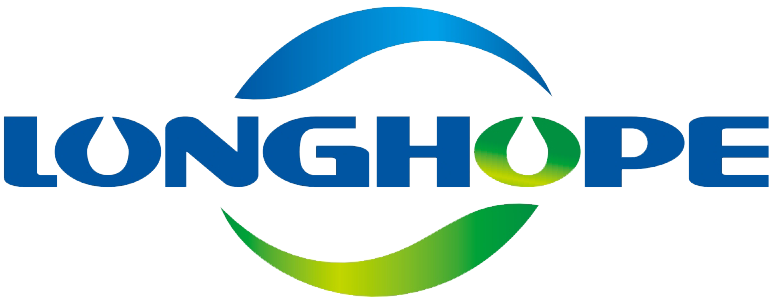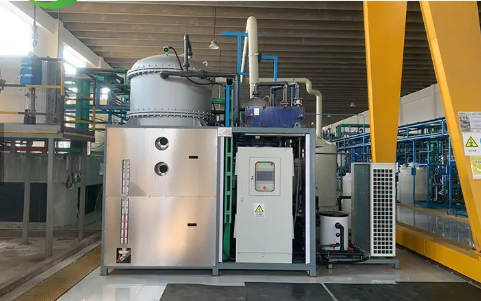고급 막 여과 시스템
효율적인 오염물질 제거를 위한 막 생물학적 반응기 (MBR)
멤브레인 바이오리액터 시스템(MBR)은 하수를 처리하는 방식에 있어 중대한 발전을 의미합니다. 이러한 혁신적인 시스템은 기존의 생물학적 처리 방식과 현대의 멤브레인 기술을 결합하여 오래된 방법들보다 오염물질을 보다 효과적으로 제거합니다. 멤브레인 자체가 수류에서 고형 입자와 박테리아를 분리하는 역할을 하므로 더 이상 대형 침전 탱크가 필요하지 않습니다. 다양한 산업 분야의 공장들은 이러한 시스템이 고농도의 폐수를 처리하는 데 특히 유용하다고 판단합니다. 예를 들어, 식품 가공 공장에서는 보통 MBR을 설치하는데, 이는 이들이 유기성 부하가 높은 폐수를 효과적으로 처리할 수 있기 때문입니다. 연구에 따르면 이러한 시스템은 슬러지 발생량을 줄이는 동시에 최종 처리수의 수질을 개선합니다. 슬러지가 적게 발생하면 처리 비용도 줄어드므로 경제적으로도 합리적입니다. 많은 제조업체들이 이제 MBR 설치를 단순한 자본 지출이 아닌 포괄적인 지속 가능성 전략의 일환으로 인식하고 있습니다.
중금속 회수를 위한 나노 여과 혁신
나노여과 기술은 중금속이 다량 포함된 산업 폐수 처리에 점점 더 중요한 역할을 하고 있습니다. 이 시스템은 특정 이온만 막을 통해 통과시키고 유해한 오염물질은 제거함으로써 작동합니다. 최근 이러한 여과막의 성능이 상당히 개선되어 오염된 물에서 중금속을 제거하는 것이 훨씬 용이해졌습니다. 일부 신형 시스템은 중금속을 약 90%까지 회수할 수 있어 환경에 미치는 영향을 크게 줄이는 데 기여하고 있습니다. 이 기술을 도입한 기업들은 지속가능성 측면에서 긍정적인 역할을 할 뿐 아니라, 더 이상 비용이 많이 드는 중금속 오염 문제를 해결할 필요가 없기 때문에 비용 절감 효과도 얻고 있습니다. 장기적으로 볼 때, 나노여과 기술은 산업 폐수 속에서 소중한 자원을 회수해 버리는 것을 방지하면서 환경 피해를 줄이는 실용적인 방법을 제공합니다.
유기 폐기물 분해를 위한 열 가수분해 공정 (THP)
열수분해 공정(Thermal Hydrolysis Process, THP)은 유기성 폐기물을 효율적으로 분해하기 위한 최신 방법 중 하나입니다. 폐기물이 이 공정 동안 고온과 고압에 노출되면 복잡한 유기 분자들이 더 단순한 형태로 분해되기 시작합니다. 이것이 바로 다양한 유형의 유기성 폐기물 처리에 있어 THP가 효과적인 이유입니다. 대부분의 시설에서는 이 공정을 약 150~200°C의 온도와 200~800psi 범위의 압력 조건에서 운영합니다. 이러한 조건은 전통적인 방법에 비해 반응 속도를 크게 증가시켜 폐기물이 훨씬 빠르게 분해될 수 있도록 합니다.
THP가 실제로 작동하는 방식을 살펴보면 그 진정한 효과를 알 수 있습니다. 예를 들어, 캄비 ASA(Cambi ASA) 같은 경우가 있습니다. 이 회사는 이 기술의 주요 개발사 중 하나이며, 이들이 발표한 보고서를 보면 전 세계 설치 현장에서의 실제 성과를 확인할 수 있습니다. THP 시스템이 도입된 하수처리장에서는 처리 대상이 되는 폐기물의 양이 크게 감소하고, 그 대신 바이오가스 생산량은 급증합니다. 매립지에 처리되는 쓰레기의 양이 줄어들기 때문에 전반적으로 환경에 더 유익하며, 동시에 재생 가능한 에너지 생산량도 늘어납니다. 일부 연구에 따르면 이 기술을 적용한 시설은 바이오가스 생산량을 최대 30%까지 증대시킬 수 있다고 하며, 이는 경제적인 부담 없이 폐기물을 지속가능하게 관리하려는 모든 이들에게 중요한 도구가 됩니다.
산업 슬러지로부터의 바이오가스 생성
더 많은 산업들이 친환경 폐기물 관리 전략의 일환으로 슬러지 폐기물에서 바이오가스를 생산하는 방식을 채택하고 있습니다. 기본적인 개념은 간단합니다. 산업용 슬러지가 혐기성 소화를 겪을 때 메탄이 풍부한 바이오가스가 생성되는데, 기업들은 이를 실제로 재생 가능한 연료로 활용할 수 있습니다. 최신 시설들은 바이오가스 생산량을 증대시키기 위해 특별히 설계된 혐기성 소화조를 설치합니다. 이러한 시스템은 통제된 소화 과정을 통해 유기물을 분해하여, 그렇지 않으면 폐기물로 남을 물질을 사용 가능한 에너지로 전환합니다. 많은 공장들이 이러한 기술을 도입한 후 비용 절감 효과를 얻었을 뿐만 아니라 환경적 발자국도 줄였다고 보고하고 있습니다.
여러 실제 사례를 통해 산업 슬러지가 실제로 유용한 양의 바이오가스를 생산할 수 있음을 확인할 수 있다. 예를 들어, 독일에 있는 하루에 수톤의 폐기물을 처리하는 제지 공장이 있다. 이 공장은 자체 슬러지를 이용해 대부분의 장비를 가동할 수 있을 만큼의 바이오가스를 생산할 수 있다는 것을 발견했는데, 이는 이러한 시스템이 얼마나 뛰어난 성능을 발휘하는지를 보여준다. 기업이 이러한 바이오가스를 포집하면 석탄이나 석유를 태우지 않고도 기계를 작동시키거나 전기를 생성할 수 있는 에너지를 얻게 된다. 바이오가스로 전환하는 것은 환경적으로나 경제적으로 모두 타당한 선택이다. 이러한 시스템을 설치한 공장들은 비싼 계통 전력 사용을 줄일 수 있을 뿐만 아니라 탄소 배출량도 대폭 감소시킬 수 있다. 일부 공장은 적절한 슬러지 관리를 통해 에너지 측면에서 거의 자급자족하는 수준에 이르렀다.
전기화학적 처리 기술
중금속 제거를 위한 전기응집
전기응집(Electrocoagulation, EC)은 중금속이 포함된 산업용 폐수 정화 처리에서 혁신적인 기술로 주목받고 있습니다. 이 공정은 특수한 양극이 용해되면서 물속에서 응집제를 직접 생성합니다. 이때 용해된 물질들이 오염물질을 뭉쳐 물기둥에서 침전되도록 도와줍니다. 이러한 오염물질에는 공장 배출수에 자주 나타나는 납, 구리, 니켈 같은 금속들이 포함됩니다. EC 기술의 가장 큰 장점은 오염물 제거 효율이 매우 뛰어나다는 점입니다. 일부 연구에 따르면 다양한 산업 환경에서 특정 금속의 제거율이 거의 99%에 달하기도 합니다. 이러한 성과 덕분에 EC는 환경 규제를 충족하면서도 처리 비용을 과도하게 들이지 않으려는 공장들 사이에서 점점 더 주목받고 있습니다.
EC의 주요 이점 중 하나는 운영 비용이 많이 들지 않으며 요즘 대부분의 지역에서 요구하는 엄격한 환경 기준을 충족시킨다는 점입니다. 최근 『Journal of Environmental Management』에 발표된 논문에 따르면, EC 시스템은 사용하는 화학물질이 적고 전력 소비도 적기 때문에 하수 처리장 비용을 절감한다는 결과를 보여주었습니다. 게다가 이 기술은 다양한 종류의 오염물질에 효과적으로 대응할 수 있어 폐수 문제를 해결하는 데 유연하게 적용할 수 있습니다. 이러한 다용도성 덕분에 EC는 오염된 물을 지속 가능한 방식으로 장기적으로 관리하려는 사람들에게 고려할 가치가 있는 기술로 부상하고 있습니다.
고지속성 유기 오염물질의 전기산화
전기산화는 폐수 처리에서 어려운 유기 오염 물질을 제거하기 위해 사용하는 고등 산화 기술 중 하나로 두드러진 방법입니다. 이 공정에서는 양극 산화 반응이 복잡한 유기 화합물을 분해하여 단순하고 무해한 물질로 전환시킵니다. 이 접근법이 특히 효과적인 이유는 이러한 물질들을 분해하는 속도가 매우 빠르기 때문으로, 많은 시설들이 특히 제거하기 어려운 오염 물질을 처리할 때 전기산화를 선택합니다. 예를 들어, 병원에서 배출되는 잔류 의약품, 농장에서 유래한 농약 잔여물, 또는 쉽게 제거되지 않는 산업용 염료와 같은 색소 물질 등을 생각해볼 수 있습니다.
전기산화는 전극 표면에서 수산화 라디칼과 같은 강력한 산화제를 생성함으로써 지속성 유기 오염물질을 완전히 분해합니다. 연구에 따르면 이 공정은 섬유 산업 폐수 내 특정 오염물질을 90% 이상 제거할 수 있어 산업 응용 분야에서 상당히 효과적입니다. 단지 환경 규제를 준수하는 것을 넘어서, 이 접근법은 하류에서 추가적인 오염 문제를 예방하는 데도 기여합니다. 정부가 수질 기준 관련 규제를 계속 강화하고 있는 상황에서 많은 시설들이 전기산화 공법을 도입하고 있으며, 이는 규제 요건에 부합함과 동시에 실제적인 환경적 이점을 제공하기 때문입니다. 미래를 대비하는 기업의 경우, 이 기술을 도입하는 것은 폐수 관리 측면에서 규제 준수 및 지속 가능성 측면에서 모두 타당한 선택이 됩니다.
인공지능 기반 스마트 폐기물 관리 시스템
실시간 폐수 모니터링용 IoT 센서
폐기물 관리에 IoT 센서를 도입함으로써 우리는 실시간으로 오염물질을 모니터링하는 방식을 바꾸게 되었습니다. 이러한 센서가 설치되면 기업은 24시간 내내 폐수의 수질을 점검할 수 있어 규제 기준을 준수함과 동시에 문제 발생 시 조기에 대응할 수 있습니다. 예를 들어, 폐수 처리 현장에서는 운영자들이 이러한 장비에서 지속적으로 흘러나오는 데이터를 의존하여 문제를 신속하게 파악하고 있습니다. 화학 공장과 식품 가공 업체 역시 초기 도입 사례로, 이러한 시스템을 설치한 이후 폐기물 처리 공정에서 더 나은 결과를 얻고 있습니다. 이 기술이 왜 이렇게 가치 있을까요? 수동 점검에 드는 인건비를 줄일 수 있을 뿐만 아니라 유지보수 팀이 장비 고장이 발생하기 전에 문제를 해결할 수 있게 해줘 장기적으로 비용을 절약할 수 있으며 안전 기준을 희생할 필요도 없습니다.
프로세스 최적화를 위한 예측 분석
예측 분석은 폐기물 처리를 보다 효과적으로 운영하는 데 있어 점점 더 중요해지고 있습니다. 과거 운영에서 수집된 다양한 데이터를 분석함으로써 이러한 시스템은 문제 발생 전에 이를 미리 감지하고, 전반적인 프로세스를 보다 원활하게 운영하면서 자원 사용을 줄이는 데 도움을 줍니다. 실제로 폐기물 처리 시설에서는 이러한 방법을 도입함으로써 상당한 성과를 거두고 있습니다. 에너지 비용이 감소하고, 화학 물질 사용 효율이 향상되며, 장기적으로 전체 비용이 절감되고 있습니다. AI 기술이 날로 발전함에 따라 폐기물 관리 분야의 친환경 이니셔티브를 위해 보다 고도화된 도구들이 등장하고 있습니다. 현재 진행되고 있는 이러한 변화는 더 이상 연구 논문 속 이론에 머무르지 않으며, 국내 여러 공장들이 이미 이러한 변화를 실시하고 있으며, 경영 성과 개선과 환경 발자국 감소라는 두 가지 측면에서 가시적인 효과를 보고하고 있습니다.
고급 산화 공정 (AOPs)
제약 폐기물 분해를 위한 UV/H2O2 시스템
AOP(고급 산화 공정)는 폐수로 유입되는 완고한 의약품을 제거하는 데 점점 더 중요해지고 있습니다. 이러한 공정 중 가장 효과적인 방법 중 하나는 UV/H₂O₂ 시스템입니다. 기본적으로 UV/H₂O₂ 시스템은 자외선과 과산화수소가 결합하여 하이드록실 라디칼이라는 물질을 생성합니다. 이 라디칼은 마치 작은 폭파 장치처럼 작용하여 물에 잔류할 수 있는 복잡한 약물 분자를 분해합니다. 연구에 따르면 이러한 방법을 통해 얼마나 많은 약물 잔류물이 분해되는지에 대한 놀라운 수치가 나타났습니다. UV/H₂O₂ 시스템을 사용하는 정수 처리 시설은 규제 요건을 더 쉽게 충족하는 동시에 잔류 약물로 인한 환경 피해를 줄이는 경향이 있습니다. 또한, 물이 깨끗할수록 강과 호수의 건강도 좋아지므로 장기적인 천연 자원 보존에 관심이 있는 사람들에게는 당연한 일입니다.
방적 산업 폐수를 위한 오존화 기술
오존화 처리는 염색 및 기타 유기성 물질로 인해 수질 오염 문제가 심각한 섬유 제조업계의 폐수 처리에 있어 효과적인 방법으로 주목받고 있습니다. 이 기술은 오존 가스를 사용하여 유해 물질을 환경적으로 훨씬 더 쉽게 처리할 수 있는 물질로 분해하는 방식으로 작동합니다. 섬유 업체들은 이 방법을 통해 실제로 수질 색도 제거 및 폐수 내 화학적 산소 요구량(COD)을 크게 줄이는 성과를 거두었습니다. 실제로 많은 공장들이 현장 테스트를 통해 규제 기준치를 넘는 오염물질 저감 효과를 확인하고 있습니다. 물론 이 공정은 상당한 에너지를 소비하며, 적절한 오존화 장비 설치 비용이 많이 드는 단점도 있습니다. 그러나 제조업체들이 운영을 세심하게 조정하고 창의적인 비용 절감 방안을 도입할 경우, 대부분 환경 개선 효과가 투자 가치를 상회한다고 판단합니다. 장기적인 해결책을 모색하는 섬유 생산 업체들에게 오존화 처리는 법적 규제 준수와 수질 관리 개선이라는 두 가지 이점을 동시에 제공합니다.
자주 묻는 질문 (FAQ)
막 생물 반응기(MBR)를 사용하는 데 어떤 이점이 있습니까?
MBR은 높은 오염 물질 제거율을 제공하고 우수한 방출수 품질을 생산하며, 큰 침전 탱크와 슬러지 생성의 필요성을 줄여 환경 영향을 줄이려는 산업에 적합합니다.
나노 여과는 폐수에서 중금속 회수에 어떻게 도움을 줍니까?
나노 여과는 이온이 선택적으로 통과할 수 있도록 하여 중금속을 효율적으로 포집하여 이러한 금속의 90%까지 회수하는데 도움을 주어 환경적 및 경제적 이점을 제공합니다.
열수 분해 공정(THP)이란 무엇입니까?
THP는 고온과 고압을 사용하여 유기 폐기물을 더 간단한 물질로 분해함으로써 폐수 처리와 바이오가스 생산을 향상시키고 지속 가능한 폐기물 관리에 기여합니다.
전기응집은 중금속 제거에서 어떻게 작동합니까?
전기응집은 중금속과 같은 오염 물질을 응집시키기 위해 응집제를 생성하며, 최대 99%의 제거 효율을 달성하면서도 낮은 운영 비용과 규제 준수를 유지합니다.
IoT 센서가 폐기물 관리 시스템에서 왜 중요한가요?
IoT 센서는 방출 수질을 지속적으로 모니터링하여 규제 준수를 보장하고 폐수 처리 과정의 관리에서 실시간 조정과 비용 절감을 가능하게 합니다.
고급 산화 공정(AOPs)이란 무엇인가요?
AOPs는 제약품과 같은 복잡한 오염물질을 분해하기 위해 매우 반응성이 높은 수산기 라디칼을 생성하는 공정으로, 수질을 향상시키고 지속 가능한 폐수 처리 실천을 지원합니다.

